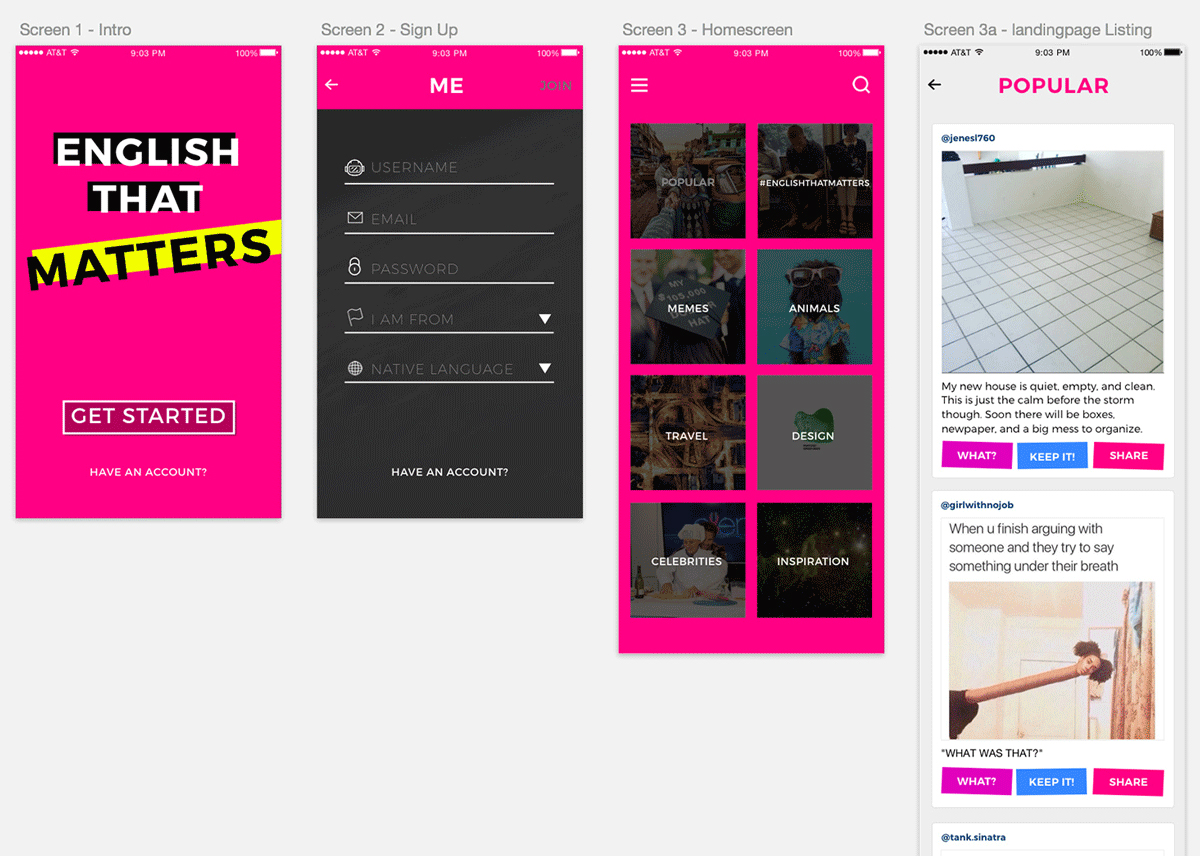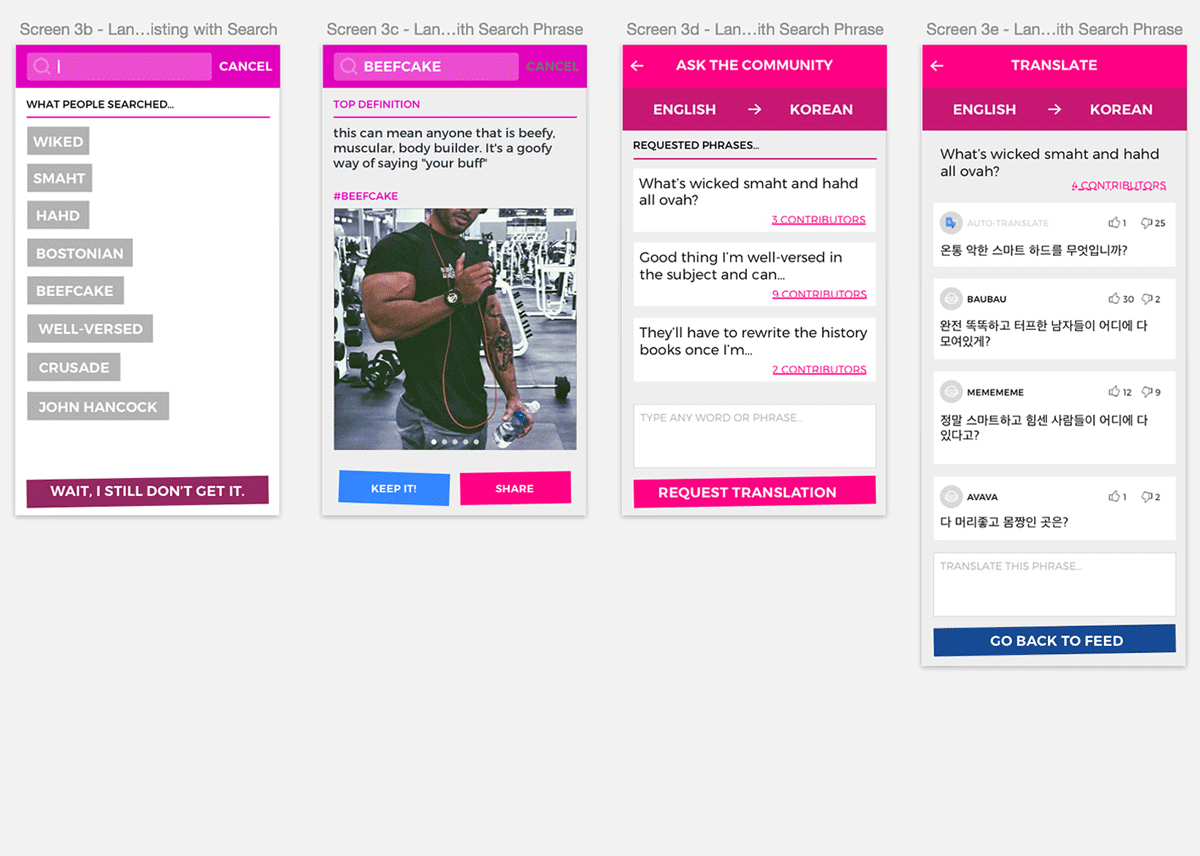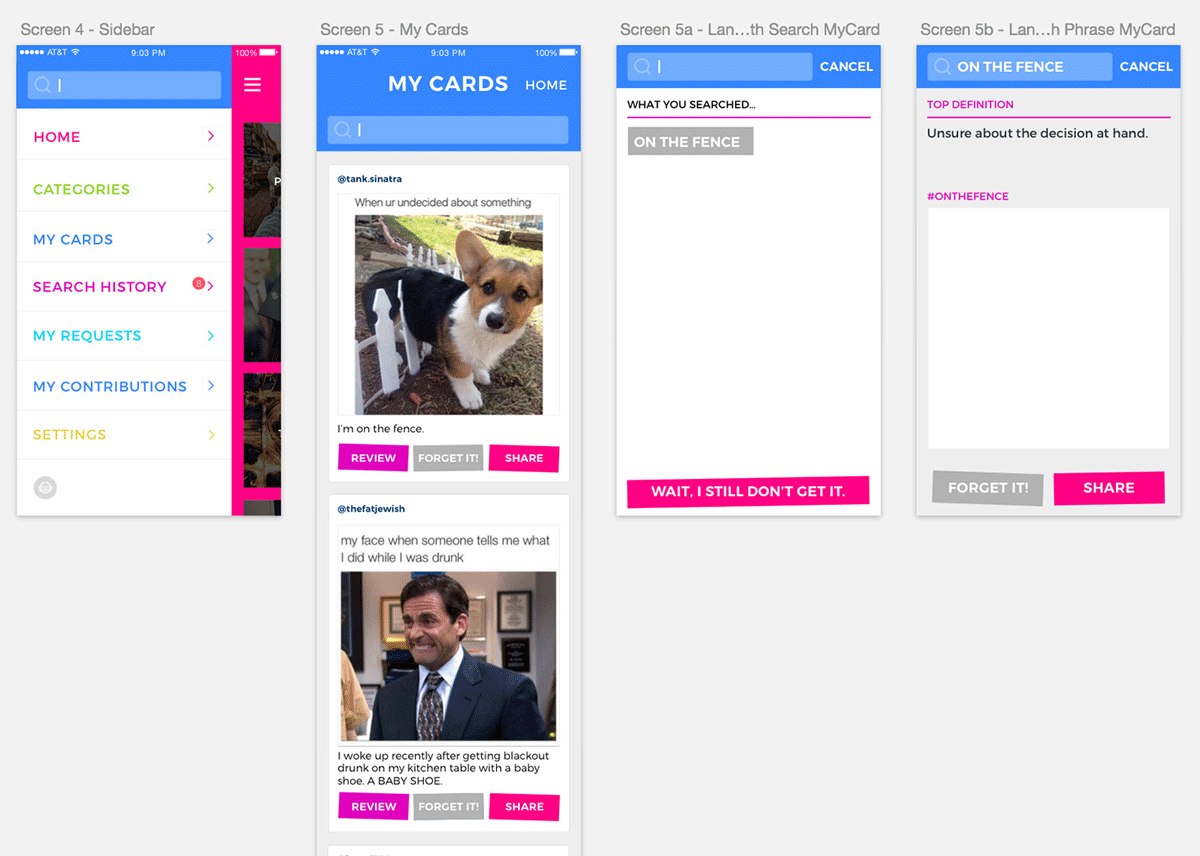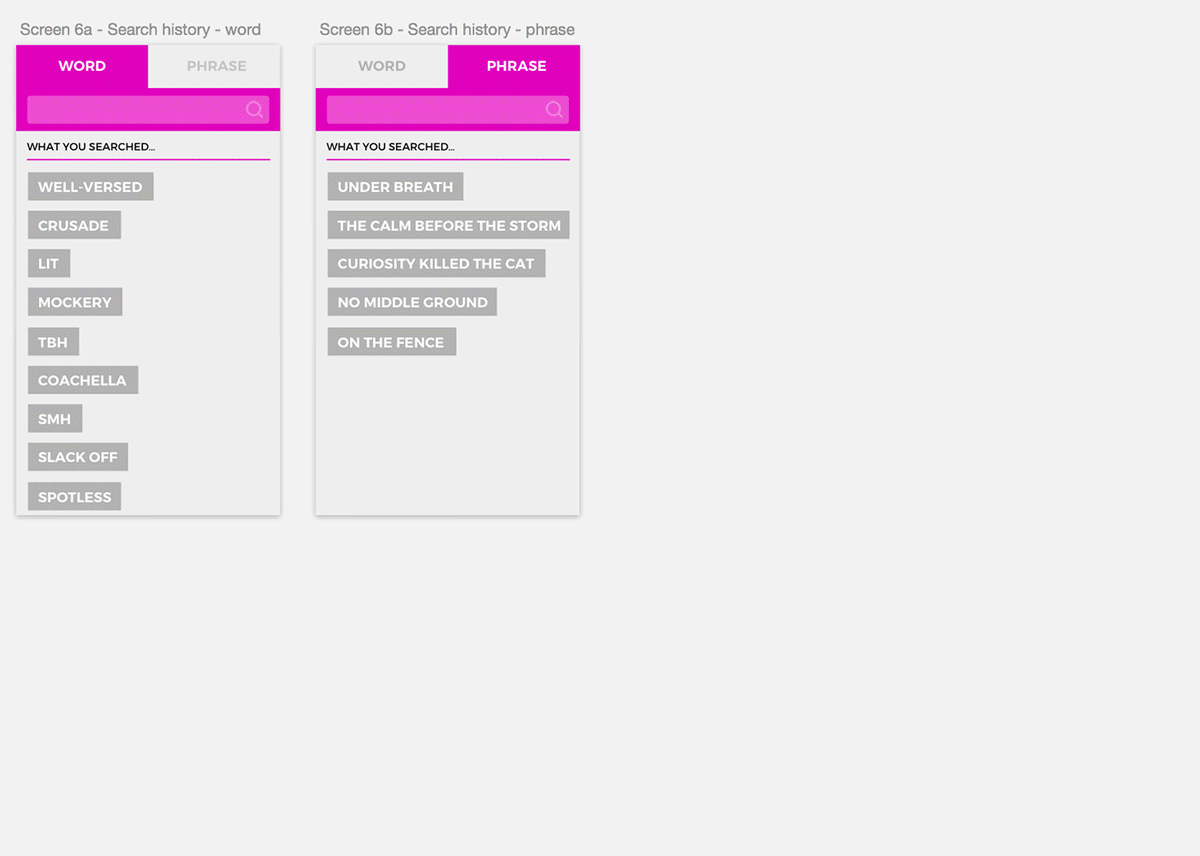English that matters
A service for learning English idioms & cultural expressions via Instagram content
overview
Role: Product Design, UX Design and Development
Master's Thesis at NYU ITP
Spring 2016
English That Matters is a mobile app for non-native speakers to learn English idioms and cultural expressions via memes and Instagram posts.
PRODUCT DEVELOPMENT JOURNEY
Real-Life Expressions Are Different from Textbooks.
In South Korea, where I’m from, English education is focused on getting a high score in the SATs. Because textbooks didn’t include the real-life expressions, I watched Friends to see what normal, daily conversations feel like. It turns out, you could learn a lot about idioms and every day use of language in this way.
Based on my experience, I started to design a product for non-native English speakers to bridge the gap between their academic accomplishment and daily use of the language through pop culture .
social media content is AN infinitely growing Education resource generated by real people.
SOCIAL MEDIA + DICTIONARY + COMMENTS:
EDU-TAINMENT
When I moved to NY, I watched less TV and spent more time on social media. I was naturally picking up new expressions through my friends' Facebook/Instagram feed all the time and found this valuable. So, I began prototyping and user-testing ways to turn this natural behavior of browsing social media into an educational activity and came to a conclusion of three main elements to begin with:
Instagram API - Using Instagram content means memes & expressions that help instantly feel what it means even when a user doesn't know the specific vocabulary or idioms. Plus, it's fun to read.
Dictionary APIs - Combining Urban dictionary, Wordnik, and Google Translate are useful to look up both formal & informal expressions.
Comments - Act as a user-generated dictionary if there are expressions that cannot be found through existing Dictionary services.
RESEARCH, Survey, and Analysis
COMPETITOR ANALYSIS
- Duolingo: A language learning and crowdsourced translation platform
- FluentU: A streaming video platform with interactive captions to see in-context definition of words
- Viki: A streaming video platform that crowdsources translated subtitles
- Genius: A collection of song lyrics and crowdsourced musical knowledge
SURVEY AND USER INTERVIEWS
I surveyed 76 students from NYU’s ALI (American Language Institute), who are taking classes that beyond intermediate level and also from my graduate school, who are non-native speakers. The survey form can be found here.
Here are some of the results from the survey:
I found out a lot of useful information from this survey. It was surprising that many of students feel like they are struggling with communicating in English in terms of social and cultural aspects. It was nothing to do with their English skill levels. Also, I interviewed several students who participated in the survey and asked them about learning English through social media. Some of them actually consider social media as an educational resource and the others don't care that much. However, it was impressive how many people rely on Urban dictionary when it comes to searching casual phrases. A lot of my initial assumptions were reassured and I also discovered new ideas and was able to narrow down the target users.
for people who want to be connected & mingle with native speakers
This service is for non-native speakers beyond intermediate level who want to engage more in casual conversations that often include cultural nuances and references.
browse, keep, and memorize expressions with images
Users come to the service and choose topics they are interested in such as animals, memes, celebrities, etc. and can browse the content, save it as a "flashcard", and review/memorize.
contenT
The content in ETM should be curated to bring in the most effective material. To do so I integrated the Instagram API and created an Instagram account, “englishthatmatters” and asked my beta users to tag the account or share the content when they find expressions either useful or hard to understand. I started pulling in the content that I collected using its oEmbed endpoint and populate the stream algorithmically.
SKETCH, PROTOTYPE, REPEAT
MOOD BOARD - SIMPLE, BOLD, COLORFUL
USER INTERFACE
Version 1
Version 2
USER TEST
WEB DEVELOPMENT PROCESS
For the interface design, my first approach was a Tinder-style swipe to make it feel more casual. But it turns out swiping works well with faces, and not so well with images with many words. Based on user-feedback, I updated the interface similar to a social media feed, the scroll that everyone is familiar with.
THE LATEST VERSION




NEXT STEPs
Here are the future steps for English that Matters:
1) Continue to manually curate useful content
2) Develop ways for users to contribute easily for crowdsourced translation
3) Enrich the "images as a dictionary" feature











